How are tornadoes rated? The Enhanced Fujita Scale explained
This classification method is named after Dr. Tetsuya "Ted" Fujita, a University of Chicago meteorologist and severe storms research scientist who developed the original Fujita Scale in 1971.
FOX Weather Explains: The EF tornado scale
FOX Weather meteorologists Jason Frazer and Britta Merwin explain the EF tornado scale.
A tornado is assigned a rating from 0 to 5 on the Enhanced Fujita Scale to estimate its intensity in terms of damage and destruction caused along the twister’s path.
This classification method is named after Dr. Tetsuya "Ted" Fujita, a University of Chicago meteorologist and severe storms research scientist who developed the original Fujita Scale in 1971. The scale became the internationally accepted method for measuring the severity of tornadoes.
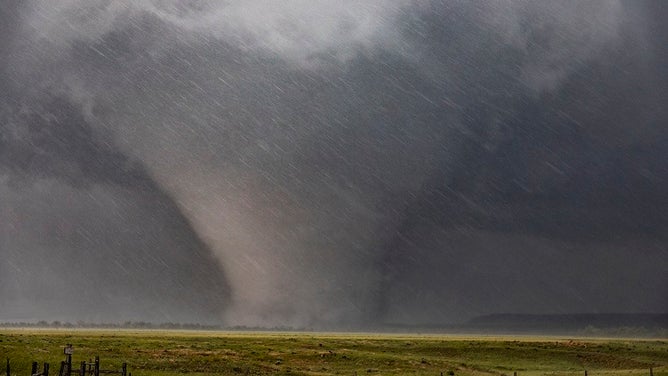
A tornado is photographed in Harding County, South Dakota, on the evening of June 28, 2018.
(Roger Hill via National Weather Service/Rapid City, South Dakota)
The original F Scale was divided into six categories:
- F-0 (light damage): Less than 73 mph
- F-1 (moderate damage): 73-112 mph
- F-2 (considerable damage): 113-157 mph
- F-3 (severe damage): 158-206 mph
- F-4 (devastating damage): 207-260 mph
- F-5 (incredible damage): 261-318 mph
TORNADOES HIT LARGE CITIES: THIS IS WHY
In the early 1970s, actual measurements of tornado wind speeds were scarce, but Fujita used the few measurements that he did have and combined them with his own expertise to formulate approximate ranges of wind speed in each of the six categories on the F Scale.
Various meteorologists and structural engineers have surveyed tornado damage in the years following the birth of the F Scale. Using their knowledge of wind speeds that are necessary for specific types of damage to buildings and other structures, it was eventually determined that Fujita’s original scale had wind speeds that were too high for F-3, F-4 and F-5 twisters.
According to NOAA’s Storm Prediction Center, the turning points were the Jarrell, Texas, tornado of May 27, 1997, and the Oklahoma City/Moore, Oklahoma, tornado of May 3, 1999 – both rated F-5 on the original Fujita Scale. Engineers claimed that many homes in those areas were only rated to withstand winds up to 100 mph, so with a house potentially destroyed by just an F-1 or F-2 tornado, that structure wouldn’t be able to reveal that a twister had 200-plus-mph winds with so much of it already gone from just half of those wind speeds.
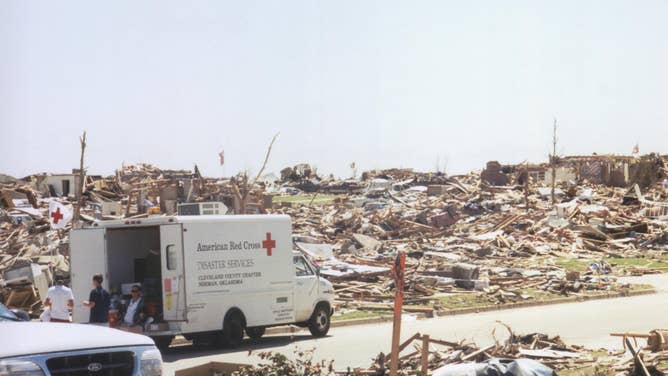
F-5 tornado damage is seen in the days following the Oklahoma City/Moore, Oklahoma, tornado of May 3, 1999.
(National Weather Service)
Fujita later came to this realization as well, and in his 1992 memoirs, he recommended adjusting the assessments from his original F scale published 21 years earlier.
An Enhanced Fujita Scale would go on to be developed by a team of meteorologists and wind engineers assembled by the Wind Science and Engineering Research Center at Texas Tech University. The EF Scale was officially implemented in the United States on Feb. 1, 2007.
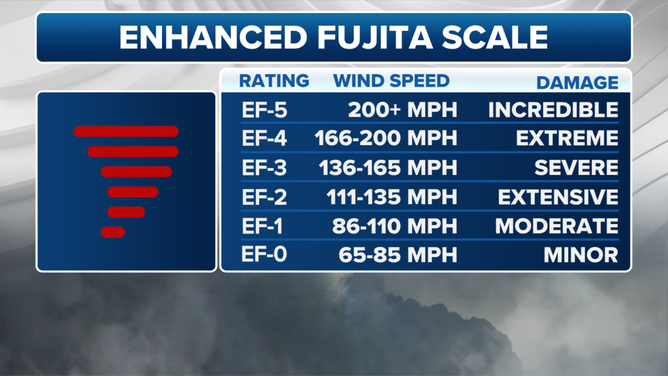
Enhanced Fujita Scale
(FOX Weather)
The most important thing to note with the EF Scale is that a tornado’s assigned rating (EF-2, EF-3, etc.) is strictly an estimate based on any damage associated with that twister.
Meteorologists from the National Weather Service conduct storm surveys in the days following suspected tornadoes and estimate wind speeds based on the damage they observe while out in the field, using the criteria from the EF Scale for guidance.
Noted forensic engineer gives behind the scenes information of recent tornado damage surveys
Meteorologist Tim Marshall, who helped develop the Enhanced Fujita Scale, joins FOX Weather to discuss how he determined the Marietta, Oklahoma tornado rated an EF-4 and Sulphur, Oklahoma's tornado rated an EF-3.
FALL IS THE SECOND SEVERE WEATHER SEASON
Measuring actual wind speeds inside twisters is a difficult feat because any weather instruments placed in their path are likely to be destroyed.
Below is a more in-depth breakdown of the Enhanced Fujita Scale from the SPC.
EF-0 (65-85 mph): Light damage will occur
The surface is peeled off some roofs. There’s some damage to gutters or siding. Branches are broken off trees. Shallow-rooted trees are pushed over.
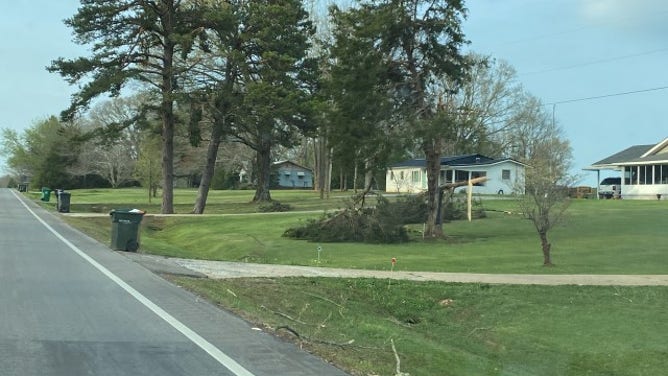
This is an example of EF-0 tornado damage.
(National Weather Service)
EF-1 (86-110 mph): Moderate damage will occur
Roofs are severely stripped. Mobile homes are overturned or badly damaged. Exterior doors are lost. Windows and other glass are broken.
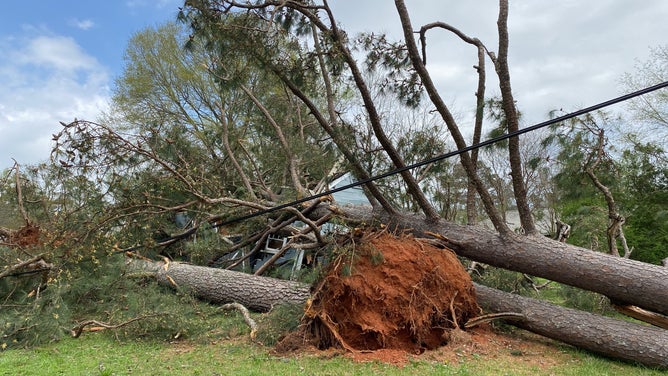
This is an example of EF-1 tornado damage.
(National Weather Service)
EF-2 (111-135 mph): Considerable damage will occur
Roofs are torn off from well-constructed houses. Foundations of frame homes are shifted. Mobile homes are completely destroyed. Large trees are snapped or uprooted. Light-object missiles are generated. Cars are lifted off the ground.
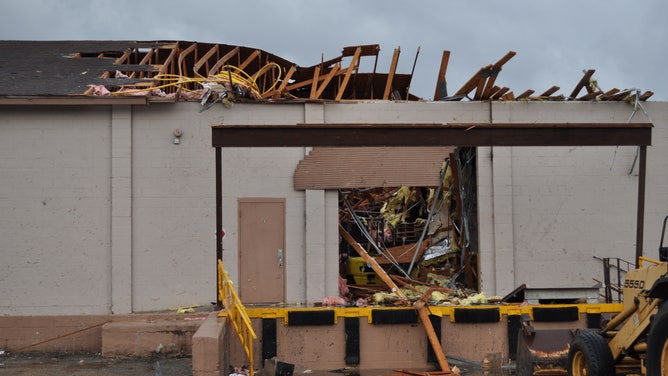
This is an example of EF-2 tornado damage.
(National Weather Service)
EF-3 (136-165 mph): Severe damage will occur
Entire stories of well-constructed houses are destroyed. There’s severe damage to large buildings such as shopping malls. Trains are overturned. Trees are debarked. Heavy cars are lifted off the ground and tossed around. Structures with weak foundations are badly damaged.
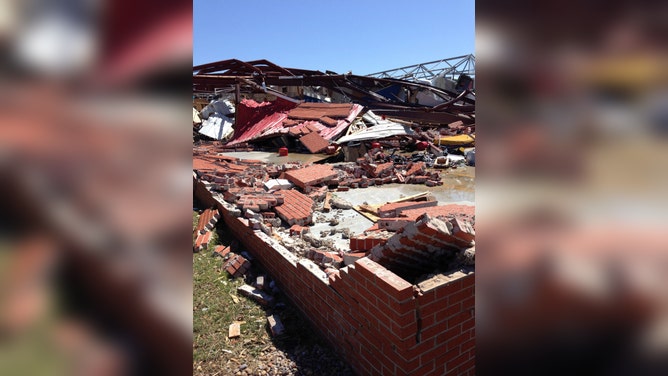
This is an example of EF-3 tornado damage.
(National Weather Service)
EF-4 (166-200 mph): Devastating damage will occur
Well-constructed and whole-frame houses are completely leveled. Some frame homes may be swept away. Cars and other large objects are tossed around. Small missiles are generated.
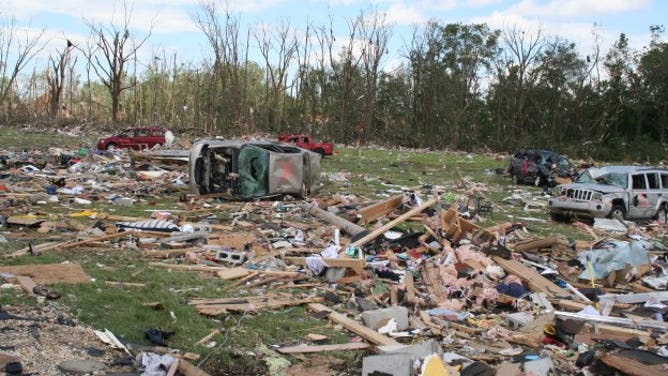
This is an example of EF-4 tornado damage.
(National Weather Service)
EF-5 (greater than 200 mph): Incredible damage will occur
Well-built frame houses are destroyed, with their foundations swept clean of debris. Steel-reinforced concrete structures are critically damaged. Tall buildings collapse or have severe structural deformations. Cars, trucks and trains can be tossed to about 1 mile away.
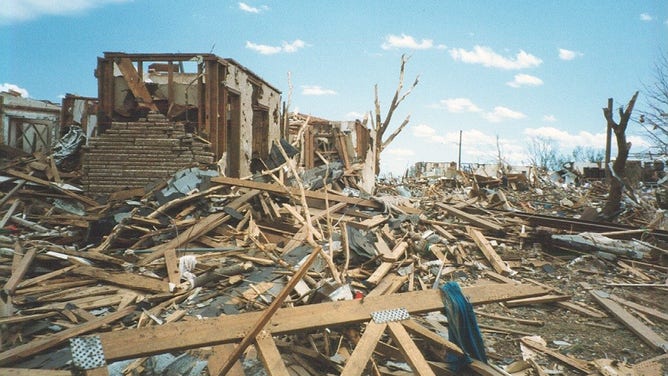
This is an example of EF-5 tornado damage.
(National Weather Service)

